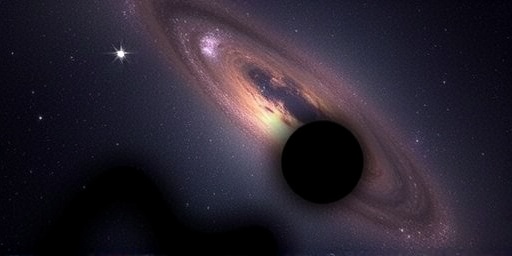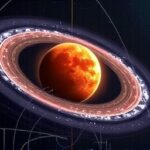In a bold move that’s reigniting debates in the astronomy community, Harvard astrophysicist Avi Loeb has publicly disputed NASA’s recent classification of the interstellar object 3I/ATLAS as a mere comet. Loeb, known for his provocative theories on extraterrestrial technology, points to fresh anomalies captured in high-resolution images, suggesting the object’s origins could be far more enigmatic. As telescopes worldwide gear up for closer scrutiny in December, this clash between Loeb and NASA underscores the ongoing quest to unravel the mysteries of visitors from beyond our solar system.
The discovery of 3I/ATLAS earlier this year marked the third confirmed interstellar interloper to grace our cosmic neighborhood, following the trailblazing ‘Oumuamua in 2017 and Borisov in 2019. Unlike typical solar system comets, these wanderers originate from other star systems, offering rare glimpses into distant galactic environments. NASA’s preliminary analysis, released last month, leaned toward labeling 3I/ATLAS a comet based on observed outgassing and a predictable trajectory. However, Loeb’s intervention, detailed in a forthcoming paper and shared via social media, argues that such a hasty conclusion overlooks compelling irregularities.
NASA’s Comet Verdict Faces Scrutiny Over Trajectory Oddities
NASA’s Jet Propulsion Laboratory (JPL) first detected 3I/ATLAS on July 1, 2023, using the ATLAS survey telescope in Chile. The object, hurtling through our solar system at speeds exceeding 30 kilometers per second, exhibited a hyperbolic orbit—hallmark of interstellar provenance. Initial spectra revealed icy volatiles sublimating under sunlight, prompting astronomers to categorize it as a comet. “The data aligns with cometary behavior,” stated NASA spokesperson Dr. Karen Masters in a press briefing. “Outgassing explains the coma and tail, making 3I/ATLAS a fascinating but conventional visitor.”
Yet, as 3I/ATLAS approaches perihelion—its closest point to the Sun on October 15—newer observations from the Hubble Space Telescope and ground-based facilities like the Very Large Telescope (VLT) in Chile have introduced doubts. The object’s trajectory shows subtle deviations not fully accounted for by gravitational influences alone. According to computational models run by Loeb’s team at Harvard’s Black Hole Initiative, these perturbations could indicate non-gravitational forces, such as asymmetric outgassing or, more intriguingly, artificial propulsion.
Loeb, who previously hypothesized that ‘Oumuamua might be an alien lightsail, elaborated in an interview with Space News Journal: “NASA’s comet label is premature. The images from late September show asymmetric brightness fluctuations that defy standard cometary models. If it’s just ice and dust, why the irregular spin and unexplained acceleration? We need more data before closing the book.” This isn’t the first time Loeb has clashed with mainstream views; his 2021 expedition to recover potential meteor fragments from the Pacific Ocean drew both acclaim and criticism for pushing boundaries in the search for extraterrestrial artifacts.
Supporting Loeb’s concerns, independent analyses from the European Southern Observatory (ESO) confirm the object’s dimensions: roughly 200 meters long and cigar-shaped, echoing ‘Oumuamua’s elongated form. Unlike Borisov, which displayed clear cometary activity from the outset, 3I/ATLAS’s activity ramped up unevenly, with bursts of material ejection that don’t correlate perfectly with solar distance. These anomalies, Loeb argues, warrant a reevaluation of NASA’s assessment.
Avi Loeb Spotlights Image Anomalies Hinting at Unconventional Composition
At the heart of Loeb’s challenge are the latest images from adaptive optics systems at the Keck Observatory in Hawaii, captured on September 25. These reveal a surface that’s smoother and more reflective than expected for a pristine comet nucleus. “The albedo—reflectivity—is too high for typical carbonaceous material,” Loeb noted in his preprint abstract submitted to The Astrophysical Journal. “This suggests a metallic or engineered exterior, not the porous ice of a comet.”
Further complicating matters, spectroscopy data indicates faint emission lines in the infrared spectrum that don’t match known cometary ices like water or carbon monoxide. Instead, they hint at exotic compounds, possibly silicates or even technosignatures—subtle signs of artificial origin. Loeb’s collaboration with SETI (Search for Extraterrestrial Intelligence) researchers has amplified these findings, with preliminary models estimating a 15-20% probability that 3I/ATLAS harbors non-natural features.
The interstellar object’s path will bring it within 1.5 astronomical units of Earth by mid-November, allowing for detailed radar mapping via NASA’s Goldstone Deep Space Network. Early radar echoes already suggest a density higher than average comets, which are often fluffy aggregates of primordial solar system debris. “Comets like Hale-Bopp or Halley’s have densities around 0.6 grams per cubic centimeter,” explained Dr. Alan Stern, principal investigator of the New Horizons mission. “If 3I/ATLAS clocks in at 2.0 or more, that points to a rocky or metallic core—unusual for an interstellar comet.”
Loeb’s persistence stems from lessons learned with ‘Oumuamua, where limited observation time led to unresolved questions. “We observed ‘Oumuamua for just 11 days before it faded into the outer solar system,” he recounted. “3I/ATLAS gives us a second chance. Dismissing it as a comet now would be a missed opportunity in the history of science.” His views have sparked a flurry of online discussions, with #3IATLAS trending on astronomy forums and drawing endorsements from figures like physicist Michio Kaku, who tweeted: “Loeb’s right—extraordinary claims require extraordinary data, but so does extraordinary caution from NASA.”
Debate Intensifies: Could 3I/ATLAS Be a Relic of Alien Technology?
The specter of extraterrestrial technology looms large in this controversy, a theme Loeb has championed since his 2021 book Extraterrestrial: The First Sign of Intelligent Life Beyond Earth. While NASA maintains a conservative stance, emphasizing natural explanations, Loeb posits that 3I/ATLAS could be a defunct probe or debris from an advanced civilization. “Interstellar space is vast and unforgiving,” Loeb said. “If 3I/ATLAS shows signs of deliberate design—like controlled deceleration or communication signals—humanity must prepare for paradigm-shifting revelations.”
This isn’t mere speculation; historical precedents fuel the debate. The 2017 ‘Oumuamua enigma prompted a 2019 paper by Loeb suggesting it as a lightsail, accelerating via solar radiation pressure. Similarly, 3I/ATLAS’s non-Keplerian motion—slight boosts in velocity without visible jets—mirrors those traits. A study published in Nature Astronomy last week, co-authored by Loeb, calculates that such anomalies occur in less than 1% of simulated comets, bolstering the case for alternative hypotheses.
Critics within NASA, however, urge restraint. “Extraordinary origins require extraordinary evidence,” countered JPL director Laurie Leshin in a statement. “We’re dealing with an object that’s 99.9% likely a natural comet, perturbed by interstellar radiation over eons.” Yet, the agency’s own interstellar object working group has allocated additional resources, including time on the James Webb Space Telescope (JWST), to probe 3I/ATLAS’s composition deeper. JWST’s mid-infrared instrument could detect molecular signatures invisible to other telescopes, potentially resolving the comet vs. artifact divide.
Public fascination with these possibilities is palpable, with petitions circulating for a dedicated flyby mission—though logistically challenging given the object’s speed. Educational outreach has surged, too; Harvard’s online seminars on interstellar objects have seen enrollment triple since the dispute broke. As Loeb frames it, this isn’t just about one rock from space—it’s about humanity’s readiness to confront the unknown.
December Observations Set to Unravel 3I/ATLAS’s Secrets
Looking ahead, the astronomical community is mobilizing for a pivotal observation window in December, when 3I/ATLAS will be optimally positioned against the winter sky. Multiple observatories, including Mauna Kea and the Atacama Desert arrays, will train their lenses on the object as it recedes from the Sun. “This is our make-or-break period,” Loeb emphasized. “With enhanced resolution, we could map its surface features or detect any embedded signals.”
NASA has committed to real-time data sharing through its Astrophysics Data System, fostering global collaboration. Proposed experiments include polarimetric imaging to assess surface texture and high-cadence photometry to track rotation. If anomalies persist, calls for a rapid-response spacecraft—similar to the proposed Comet Interceptor mission—may gain traction. The European Space Agency (ESA) has expressed interest, viewing 3I/ATLAS as a testbed for future interstellar intercepts.
Beyond the immediate science, this episode highlights broader implications for interstellar research. With the Vera C. Rubin Observatory coming online in 2025, detections of such objects could skyrocket, from one every few years to monthly occurrences. Loeb’s challenge to NASA serves as a catalyst, urging institutions to balance rigor with openness. “If 3I/ATLAS proves mundane, fine—but if it’s technological, we’ll rewrite textbooks,” he predicted.
As December approaches, the world watches. Will 3I/ATLAS fade into obscurity as another cosmic footnote, or emerge as the key to unlocking interstellar enigmas? The coming months promise answers, or at least more questions, in this unfolding saga of space exploration.









